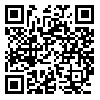جمعه 28 شهریور 1404
دوره 15، شماره 2 - ( 10-1404 )
جلد 15 شماره 2 صفحات 164-151 |
برگشت به فهرست نسخه ها
Download citation:
BibTeX | RIS | EndNote | Medlars | ProCite | Reference Manager | RefWorks
Send citation to:



BibTeX | RIS | EndNote | Medlars | ProCite | Reference Manager | RefWorks
Send citation to:
Ebrahimi A, Jafarpishe A S, Vahedi M, Izadi Laybidi M, Mohammadi S. Comparison of the Effectiveness of Gamification, Tracking Patterns, and Visual Gauges in Improving Hand Motor Performance Through Biofeedback. PTJ 2025; 15 (2) :151-164
URL: http://ptj.uswr.ac.ir/article-1-662-fa.html
URL: http://ptj.uswr.ac.ir/article-1-662-fa.html
Comparison of the Effectiveness of Gamification, Tracking Patterns, and Visual Gauges in Improving Hand Motor Performance Through Biofeedback. فصلنامه فیزیک درمانی. 1404; 15 (2) :151-164
چکیده: (1857 مشاهده)
Purpose: The scientific methods for evaluating muscle activity involve the use of various techniques. Biofeedback, which consists of equipment providing individuals with real-time feedback regarding their physiological responses, is crucial in enhancing neuromuscular function. Despite its potential, the effectiveness of biofeedback interventions on motor performance remains a topic of debate. This study aimed to investigate the effectiveness of different biofeedback interventions on motor performance improvement in hand. This study contributes to a more comprehensive understanding of the role of biofeedback in motor function improvement in hand.
Methods: A total of 60 individuals were randomly assigned to one of four groups: Aircraft, visual gauge, pattern-tracking, and a control group. Preintervention and postintervention assessments were performed to evaluate motor performance in hand. Statistical analysis was conducted using the paired t-test to compare the root mean square error between groups.
Results: The pattern-tracking group demonstrated significant motor performance improvement, with a statistically significant difference in root mean square error (P<0.001). This finding suggests that this specific biofeedback approach may effectively enhance motor performance in hand.
Conclusion: The study’s findings support the task-oriented approach, which emphasizes the importance of adaptability to environmental changes, and the part versus whole training theory, which argues that breaking down a motor task into smaller components improves performance. The results highlight the importance of similar practices to the final objective for motor function improvement in the hand area. The study’s findings have implications for developing effective biofeedback interventions for motor performance improvement in individuals with hand-related motor impairments. Furthermore, the conclusions can be applied to various populations, including athletes and individuals in different lines of work, who can benefit from improved motor performance in their hands.
Methods: A total of 60 individuals were randomly assigned to one of four groups: Aircraft, visual gauge, pattern-tracking, and a control group. Preintervention and postintervention assessments were performed to evaluate motor performance in hand. Statistical analysis was conducted using the paired t-test to compare the root mean square error between groups.
Results: The pattern-tracking group demonstrated significant motor performance improvement, with a statistically significant difference in root mean square error (P<0.001). This finding suggests that this specific biofeedback approach may effectively enhance motor performance in hand.
Conclusion: The study’s findings support the task-oriented approach, which emphasizes the importance of adaptability to environmental changes, and the part versus whole training theory, which argues that breaking down a motor task into smaller components improves performance. The results highlight the importance of similar practices to the final objective for motor function improvement in the hand area. The study’s findings have implications for developing effective biofeedback interventions for motor performance improvement in individuals with hand-related motor impairments. Furthermore, the conclusions can be applied to various populations, including athletes and individuals in different lines of work, who can benefit from improved motor performance in their hands.
| بازنشر اطلاعات | |
 |
این مقاله تحت شرایط Creative Commons Attribution-NonCommercial 4.0 International License قابل بازنشر است. |



